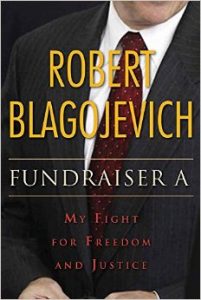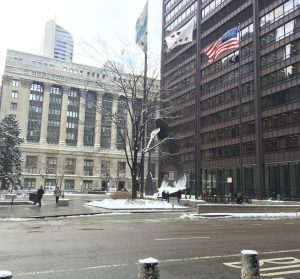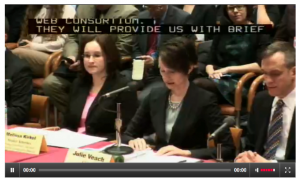For many years Rogers Park has been known as one of Chicago’s most diverse neighborhoods, welcoming people from Latin America, Europe, Asia, Africa and the Middle East. Though Rogers Park is widely loved for its diversity, the neighborhood faces a host of problems, including foreclosures, a lack of investment, high crime and also fears of gentrification.
For the past three years, an all-volunteer organization called Partners for Rogers Park has been asking residents to come together to chart a new future for the neighborhood. The group’s website (www.partnersforrogerspark.org) describes lofty goals, saying the organization’s mission is “to promote positive community development for current residents through open and inclusive partnerships that foster a healthy and just Rogers Park.”
But so far residents say the process has not lived up to the hype. About 35 people, half of them volunteers with the group, came to the group’s first meeting in August, which lasted three hours. A scheduled September meeting was canceled, and an Oct. 5 meeting drew a small and somewhat disgruntled crowd. Overall, residents showed little awareness of or interest in the process.
This month’s meeting was held at the Chicago Math and Science Academy, starting with an open house where residents brainstormed in small groups about what they would like to see in the neighborhood’s future. There were only 10 to 12 people who were not volunteers with the group at the meeting. Activist Francis Scudellari said there hasn’t been enough outreach or publicity about the meetings and the overall process.
“I think that one of the biggest obstacles is that they have to get people to know,” Scudellari said. “(Rogers Park) is a community that gets its information from word of mouth, and from what I’ve heard, many people don’t know about this plan and what is going on.”
“I haven’t heard anything about these meetings or even any of these initiatives,” said resident Adriana Zambrano, 22. “I wish I had known because I would love to hear what they have to say.”
The October meeting was focused largely on the results of a neighborhood survey. The group said they had reached out to about 1,400 individuals, either through online surveys or on the street. They were hoping survey participants, who had been notified about the meeting by email or letter, would attend. But few showed up.
Residents attending the Oct. 5 meeting said they were perplexed by the survey results. As diagrams with results were presented, it became clear that the majority of respondents (473) had lived in Rogers Park for only six months to a year. The next most prevalent group were people living in Rogers Park less than five years. Residents surmised this meant many of the respondents were Loyola University students, who are only in Rogers Park temporarily for school.
Residents said this doesn’t present an accurate portrait of Rogers Parks’ past and people’s hopes for the neighborhood’s future, since students are not a part of the past and many of them won’t stay after college.
“We can’t really trust these results because of the people that are included in them,” said long-time Rogers Park resident Michael Harrington. “I’d like to see what the stats look like without these kids in them, because that will truly tell us how the people of Rogers Park feel. Until then, none of the things found in this survey can be counted because it hasn’t and won’t affect any of them.”
One of the biggest fears in Rogers Park is that it will become heavily gentrified, reducing the neighborhood’s diversity. Long-time residents worry the area where they have spent a good amount of their lives will become something of a “foreign land,” a place that will more closely resemble Wicker Park, an area that has drastically changed over the last 15 to 20 years.
Maintaining diversity and avoiding displacement were among the goals of Partners for Rogers Park’s project. But Scudellari and residents at the meeting said they don’t think it will achieve that aim.
“What scares me is that this (process) will end up being like past issues where the ideas were already set in stone,” Scudellari said. “The last thing you want is people shouting at one another and getting upset with the people they have been close with and associated with for many years.”
“What this community needs is just a bit of diversity in everything–in leadership, residents, everything,” Harrington said. “Until (we have) that, Rogers Park will not be the place we want it to be.”
















Be First to Comment